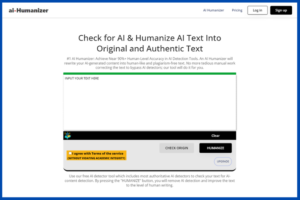Introduction
In a recent development, OpenAI has made waves by entering into collaborations with the U.S. military on innovative projects, notably delving into the realms of open-source cybersecurity software. The company, recognized for its advanced AI models, recently caught attention by removing the clause in its terms of service that previously restricted the use of its technology in “military and warfare” applications. This decision has sparked discussions about OpenAI’s evolving stance and its broader policy update.

The Unveiling of New Guidelines
Anna Makanju, OpenAI’s Vice President of Global Affairs, provided insight into the strategic change, highlighting that the lifting of the ban on military use is just one aspect of a broader update to support new uses of ChatGPT and other tools. The revised guidelines now permit collaboration on projects involving cybersecurity, medicine, and therapy, even in military settings. Although direct military use is no longer forbidden, OpenAI remains resolute in its prohibition of AI deployment for harmful purposes or weapon development.
Exploring Therapeutic Applications
OpenAI has been actively involved in discussions with the U.S. government regarding the use of AI, particularly ChatGPT, in suicide prevention methods for combat veterans. This is an important step towards utilizing AI for therapeutic purposes and emphasizes the positive impact technology can have on mental health support.
Partnership with the U.S. Department of Defense
OpenAI’s collaboration with the U.S. Department of Defense takes a tangible form through the joint development of open-source cybersecurity software. This project aligns with the organization’s new guidelines, emphasizing a commitment to societal benefits and responsible AI use.
Addressing Societal Issues
OpenAI has not only focused on military collaborations but has also launched projects to tackle the misuse of AI in elections. A remarkable project they have undertaken is the development of an image identifier for the DALL-E 3 AI tool, which aims to counter any malicious activities during elections. Moreover, OpenAI has made efforts to make AI models accessible to a wider range of political ideologies, thus ensuring a more diverse representation. By establishing a dedicated team to gather public opinion and incorporate it into AI models, OpenAI demonstrates its dedication to inclusivity and the ethical development of AI.
Focus on Cybersecurity
The partnership between OpenAI and the US military currently revolves around the development of innovative cybersecurity tools. This includes projects aimed at:
- Automated vulnerability detection and fixing: AI is used to find and fix security weaknesses in complicated computer systems before hackers can take advantage of them.
- Threat intelligence and analysis: Analysts are given AI-powered tools to gather, analyze, and comprehend advanced cyber threats, allowing for quicker and more efficient responses.
- Cybersecurity infrastructure defense: Developing automated systems that can independently identify and prevent cyberattacks, safeguarding critical infrastructure from disruption.
Potential Benefits and Risks
OpenAI’s collaboration with the military holds great promise, offering significant advantages like bolstering national security and fortifying defenses against advanced cyber threats. Nevertheless, this partnership also gives rise to certain apprehensions, including the potential for mission drift, challenges related to transparency and accountability, and the possibility of AI being used as a weapon.
Mission Creep
There’s a worry that the partnership might go beyond cybersecurity and involve offensive capabilities, so it’s important to clearly define boundaries to guarantee the ethical application of AI.
Transparency and Accountability
Developing and implementing AI-powered tools responsibly calls for strong supervision and transparent systems to avoid any misuse or unintended outcomes.
Weaponization of AI
The main goal of this collaboration is to strengthen defense efforts. However, it is crucial for countries to work together internationally in order to stop malicious individuals from misusing AI advancements for harmful intentions.
Conclusion
OpenAI’s recent policy updates and collaborations highlight their careful and thoughtful approach to the responsible and positive use of AI technology in today’s ever-changing landscape. By exploring new areas like therapeutic applications and cybersecurity projects, OpenAI demonstrates their dedication to the well-being of society while also considering the ethical implications of AI. Moreover, OpenAI’s proactive efforts to tackle concerns like election interference and political inclusivity establish them as a significant contributor in shaping a responsible future for artificial intelligence.
FAQs
1. Why did OpenAI change its policy against military use of its technology?
OpenAI recognizes the evolving landscape of threats and believes AI can contribute to cybersecurity solutions. The new policy allows collaborations in specific areas like military cybersecurity while maintaining its stance against harmful or weaponized AI.
2. What kind of cybersecurity projects are OpenAI and the U.S. military working on?
This partnership focuses on developing open-source tools for tasks like automated vulnerability detection, threat intelligence analysis, and autonomous cybersecurity infrastructure defense.
3. What are the potential benefits of this collaboration?
Stronger national cybersecurity, improved defense against advanced cyber threats, and advancements in open-source security tools are some potential benefits.
4. What are the concerns surrounding this collaboration?
Mission creep (collaboration expanding beyond cybersecurity), lack of transparency and accountability, and potential weaponization of AI are some key concerns.
5. How is OpenAI addressing these concerns?
OpenAI emphasizes a commitment to responsible AI development through transparency measures, strict guidelines on acceptable uses, and collaboration with various stakeholders.
6. Is OpenAI only focused on military applications?
No, OpenAI is exploring AI’s potential in other areas like medicine, therapy, and countering election interference.
7. How is OpenAI ensuring inclusivity and diverse representation in its AI models?
They have dedicated teams gathering public opinion and incorporating it into model development, ensuring diverse perspectives are included.
8. What is OpenAI doing to prevent AI misuse in elections?
They developed an image identifier for DALL-E 3 to detect and counter malicious activities during elections and promote responsible AI use in political contexts.
9. Will OpenAI share the developed cybersecurity tools publicly?
Yes, the focus is on developing open-source tools accessible to everyone, aiming to benefit the broader cybersecurity community.
10. How can the public stay informed about OpenAI’s activities and policies?
OpenAI maintains a website and publishes regular updates on its research, projects, and policies. Additionally, they actively engage with the public through various platforms.





[…] paper emphasizes how cybersecurity techniques need to change significantly. Rather of depending on conventional perimeter-based […]
[…] contexts, including business and mobile computing. It is impossible to overstate the importance of cybersecurity in the globally interconnected world of today, where the internet serves as the backbone for social […]